California, the nation’s liberal testing ground for new policy and ideas, is taking the lead once again.
This time, it’s in the area of renewable energy, an area which California has invested a lot of money into. While not the nation’s leader in overall green energy, California is the nation’s leader in solar power, producing 16% of the states electrical energy in this way. This new initiative will expand that lead.
The new initiative will require virtually all new homes constructed in California to be built with solar panels, providing at least a hefty portion of the home’s electrical needs. While being lauded by environmentalists and leftists as a major victory, the new requirement probably won’t work out to be as big a benefit as people believe.
This new housing mandate, which is going to make the inclusion of solar power part of the building code, is part of Governor Jerry Brown’s effort to slash carbon emissions in the state by 40% before 2030. Like many liberal initiatives, this wasn’t a measure passed by the state legislature, but brought into existence by a vote of the California Energy Commission, bypassing normal legislative procedures.
Nevertheless, if people want to build homes in 2020 and beyond, they’ll need to build them with solar panels, or they’ll never be approved.
Click here to find out how to survive when the lights go out!
While many of us in the prepping and survival community dream of going off-grid for our energy needs, we are doing it with a much different goal in mind. Typically, we see solar power as a means to energy security, providing us with power in a grid-down situation. In that regard, solar power is merely part of an overall energy system.
Pricing Problems $$
California is already the third most expensive states to buy a home in, beaten out only by Hawaii and the District of Colombia. This is affecting California’s economy, as it is driving middle class workers, who can’t afford to buy a house, to move out of the state.
Estimates for how this new regulation will change the cost of housing range from $9,000 to $12,000, with $10,000 being mentioned the most often. That cost will of course be passed on to the consumer, meaning that more people won’t be able to afford home ownership, or will have to opt for smaller homes. Adding that much to the cost of a home is like adding another bedroom.
Advocates for the plan argue that homeowners will save more in their electric bill than the added cost of the solar panels. That’s probably true. The average return on investment for solar panels is roughly seven years. With a 30 year life on the panels, adding them to the home is a good long-term investment.
But that doesn’t help a family who is trying to buy a home. With the solar panels being part of the home, they are considered part of the home’s cost for the mortgage. This is different than what most people do today, adding solar a few years after buying their home and paying for it with a separate loan. Lending institutions are not going to raise the maximum permissible loan amount for families trying to buy a home, just because it comes with solar panels on it.
But I’m not sure where the $10,000 figure is coming from. A couple of years ago, I had a solar company give me a bid on adding solar to my home. The figure I was quoted was roughly $60,000. Granted, I live in a part of the country which is hotter than most of California, so my energy use is higher. But even if we were to assume that I lived farther north and used half the electricity, I would still need $30,000 worth of solar panels to provide for my average electrical usage.
Based on this, I would have to say that the new plan only provides for a portion of the family’s electrical needs. So, while they may pay somewhere from $60 to $100 less per month on their energy bill, that won’t help them buy their home.
But Is It Worth It?
Like many other left-wing initiatives, this move seems to be largely symbolic. It sends a strong message about California’s commitment to renewable energy and lowering their carbon footprint. For those who believe in global warming or climate change, that’s important. But how much it will actually reduce carbon output may very well be a different thing.
Solar power is a very inefficient system. While solar panels do produce electricity, each panel produces very little electricity. This problem is multiplied by the fact that most solar panels put out a low-voltage output, intended to charge 12 volt batteries. To boost that 12 volts to 120 volt house current, ten times the current input is required, to make it possible to boost the voltage ten times.
What this means is that an 80 watt solar panel is only providing 8 watts of power at 120 volts. So a 1,000 watt microwave oven would need over 100 solar panels providing it electricity, while it was working. Or a device that draws 2 amps of power would require 30 solar panels to provide it with power.
Those of us who use solar power for survival don’t intend to power our entire home off of solar panels, but rather only power a limited number of devices, generally low-power devices. While it might be nice to be able to produce enough power off of solar to keep everything in our homes working, most of us realize that it’s just not practical to do so.
But there’s another big thing that we do in the survival community, which I don’t see included in anything I’ve read about California’s move to increase solar power production. That is, we attach our solar panels to a battery backup unit. That way, the power we are producing during the daylight hours, isn’t being used directly, but rather to charge our battery bank. Then we pull power off as we need it.
Herein lies the true weakness of solar power; it is only available when the sun is shining. In most places, that means that solar panels are producing enough power to charge a battery backup system, eight to ten hours per day. The rest of the day or during inclement weather, the only power available during a grid-down situation is from the battery bank.
Assuming that I’m right and Californians aren’t going to install battery backup systems to go with their required solar panels, they’ll only be producing electric power during the daytime and only on days where the weather is cooperative. What that means is that the state’s power companies will have to provide power whenever the solar panels can’t.
This is where some of the falsehood of green energy comes into play. Both solar power and wind power are unreliable energy sources, unlike the other big source of renewable energy, hydroelectric. Solar only works when the sun is shining and wind only works when the wind is blowing; but hydroelectric power works around the clock, rain or shine, just as long as there is water in the reservoir. But the electric grid requires that the same amount of electricity is being produced as is being consumed, all the time.
The way that electric companies solve this problem with the unreliability of solar and wind power is to run power plants on standby, so that they can pick up the slack when wind and solar fail. In other words, coal-fired power plants, the ones that leftists hate, are running around the clock, just so that they can provide power when wind and solar fail. That’s not very green.
The real problem here, besides the unreliability of wind and solar power, is that there is no practical and efficient means of storing large amounts of electrical power. Even storing enough for a home is a major undertaking, costing several thousand dollars; storing enough for a city would run well into the millions. Until someone can come up with an efficient, dependable way to store large amounts of electricity, then it doesn’t matter how much green energy we produce, we’ll still need to have other power plants online, acting as a backup for them.
This basically negates a large part of the benefit of any green energy system and explains why I stated that this move by California is largely symbolic. Governor Brown’s goal can’t be reached without that, although I am sure that we will hear that is has been. They’ll just forget to mention all those dirty coal-fired power plants that are running in the background, just to keep the whole system humming.
Can It Be Fixed?
Until the power storage problem can be fixed, current technology just doesn’t allow us to do what California’s political leadership wants. While I’ll have to say that their goal is admirable, it’s not practical.
But that doesn’t mean that putting solar on homes is a total waste of time. I’m working on building my own solar panels for my home, and I don’t even live in California. So if someone is a prepper living in California, I’d say that they should take advantage of the situation, especially if the government offers any sort of tax incentives for installing solar on your home.
But I wouldn’t stop with just the solar panels. Rather, I’d install a sizeable battery backup system to go with them. That way, any electrical power I generated could be stored, providing my family with emergency power in the case of an emergency. I’d also install a whole house switch, so I could disconnect my home from the grid, should the grid go down and I have to provide for my own power off of my solar panels. Without this switch, any power I would produce would just go into the grid and not provide me with any benefit.
So, while this initiative might not be a grand success on a statewide basis, I can see where it could be a great success for individual families. All it would take is modifying the system and making sure that you had the ability to use the solar panels the state is requiring, as something that can help your family survive.


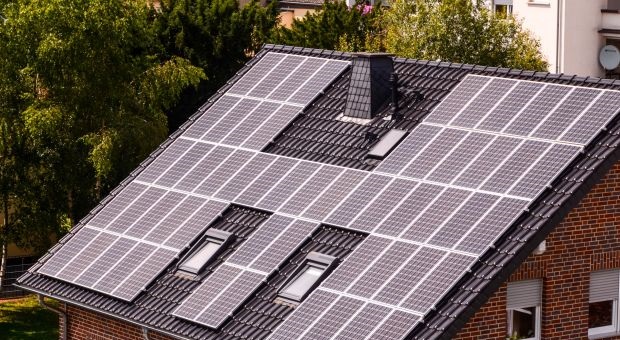
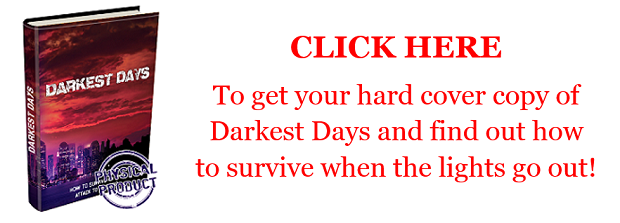
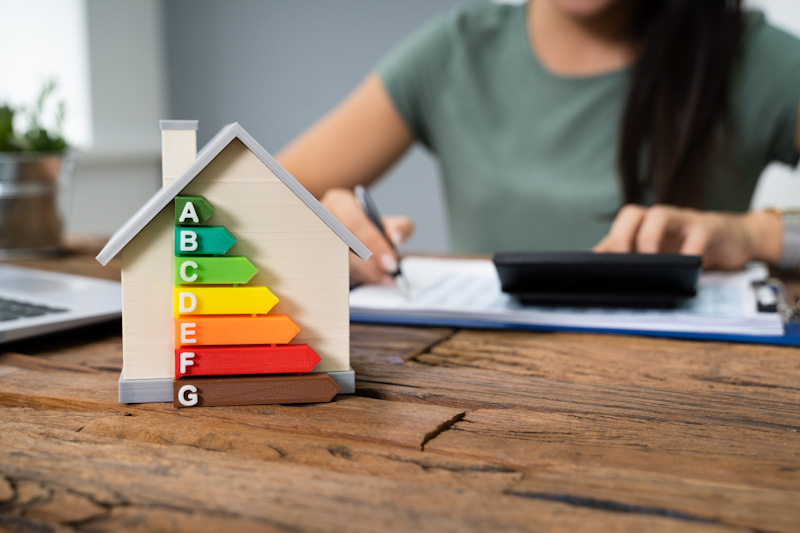
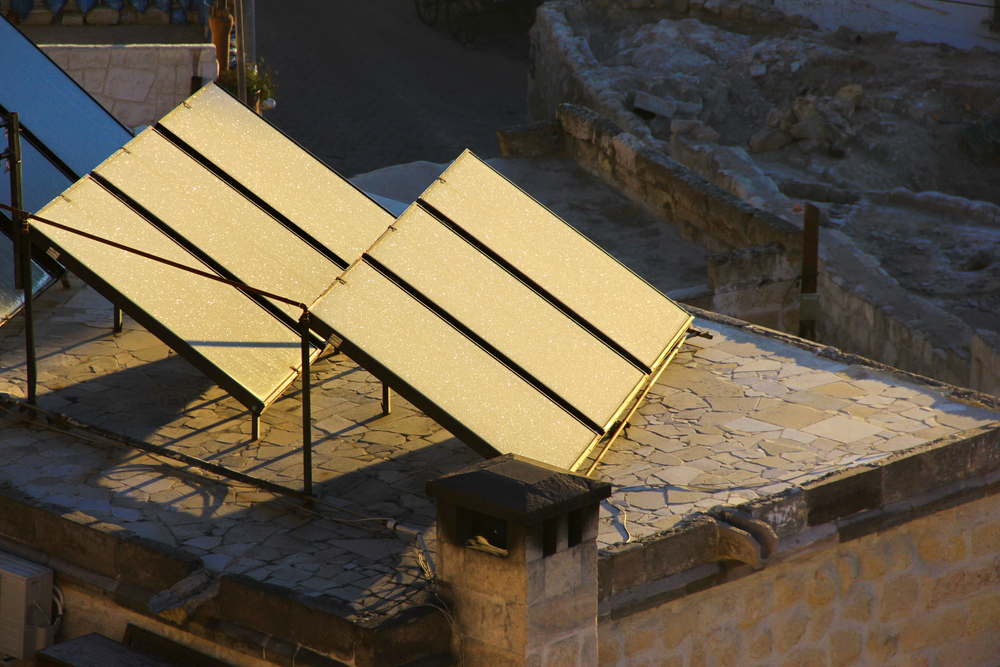
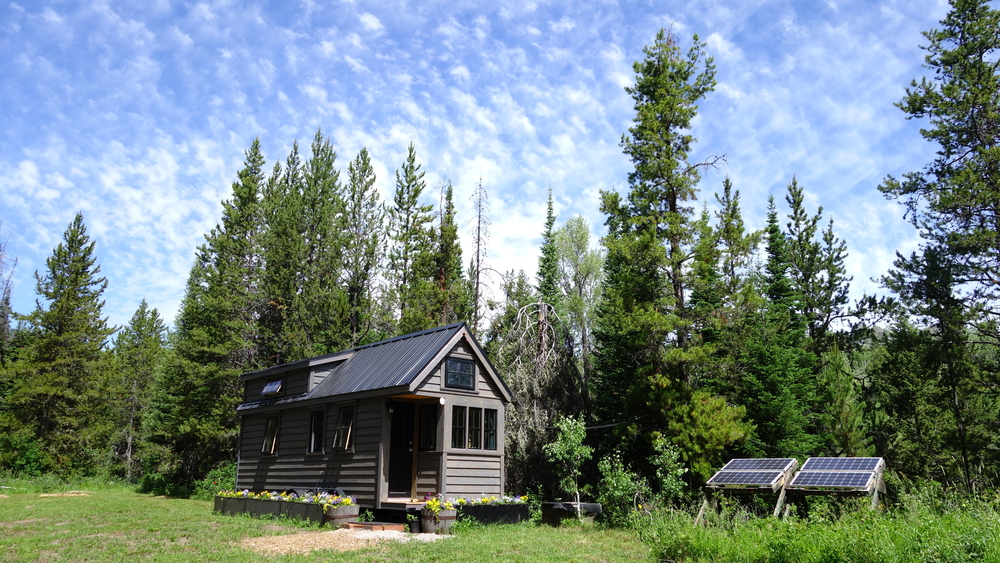
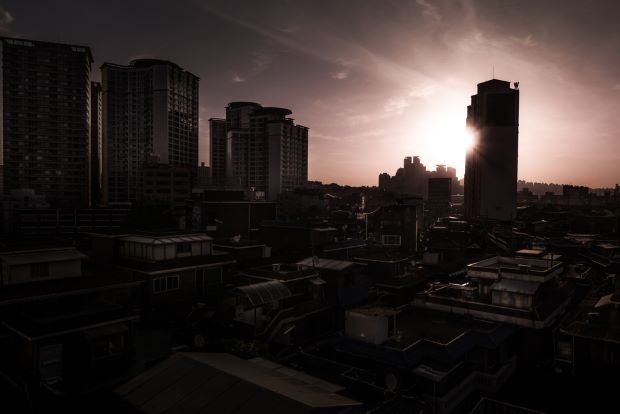

William | May 31, 2018
|
You said “But even if we were to assume that I lived farther north and used half the electricity, I would still need $30,000 worth of solar panels to provide for my average electrical usage”. Not true, as the further you live from the equator, the less solar radiation hits the ground. So with half the home consumption, you would need more than half the solar panels. And that’s not even accounting for the fact that the further north, the more likely you are to have clouds and precipitation, especially when compared to pllaces like San Diego and Phoenix.
Sabina | June 4, 2018
|
The $30,000 figure I used is the commonly accepted rough figure for how much it costs to add solar to a home. Your statements about cloud cover and less solar power hitting the ground are theoretically true, if and only if, your system is working at 100%. However, most solar systems are rated at producing 18 volts, to charge 12 volt batteries. So, at the more northern latitudes or with cloud cover, they might not produce 18 volts, but still produce enough to charge the 12 volt batteries. (Bill White)
William | June 4, 2018
|
I wasn’t talking specifically about the voltage. I wasn’t even specifically talking about charging batteries. And less solar radiation reaching the ground when further north isn’t theoretical. Look at solar radiation maps for proof of this.
When it comes to the power produced (power, as in watts, which is volts x amps), there would still be less power generated further north throughout any given day, even if clouds, precipitation, and humidity were removed from the equation.
This means that further north, assuming both the house consumption and the number of solar panels is half, the amount of power produced would be some amount less than half. So it would take more than half the number of solar panels to provide the same percentage of the home’s power needs,
Therefore, more cost further north to produce a given amount of power. And, more cost per watt, regardless of whether or not more panels are added to compensate..
And that’s not even taking into account the possible price increase per panel due to less economy of scale. A larger installation is likely to be cheaper per panel and per watt produced.
John Paterson | May 31, 2018
|
You state that: “What this means is that an 80 watt solar panel is only providing 8 watts of power at 120 volts. So a 1,000 watt microwave oven would need over 100 solar panels providing it electricity, while it was working. Or a device that draws 2 amps of power would require 30 solar panels to provide it with power.”
Actually, 80 Watts of power is either 120 Volts times 0.67 Amps or 12 Volts times 6.7 Amps. The amps at 120 Volts is 10 times less than at 12 Volts but the Watts is the same (except for efficiency of conversion).
Sabina | June 4, 2018
|
In context, I said that when you run the 12 volts of DC power through a voltage inverter, making it into 120 volts of AC power, you have to use 10 times as much current. (Bill White)
Kathryn Meyer | May 31, 2018
|
Lots of wrong information here — contact [email protected] for the complete truth. He is an expert on the subject who lives in a modern fully-solar-powered home with his wife using all the modern appliances.. He generously shares all his knowledge about how to build your own solar power on a low budget, one part at at time as money allows,. And it works according to the many people who have used his method.. He even tells you where to purchase the best components while saving yourself thousands of dollars.. Even a child could follow his directions and schematics. [email protected].
William | May 31, 2018
|
It’s not necessarily wrong information. He’s just giving costs that he’s ran across or experienced, and prices that are typical.
Of course someone with knowledge and experience probably could do it cheaper. But then again, being that I’m in the electric power generation industry, with about 25 years of combined, direct experience with electricity and electric power generation, I tend to be skeptical of such claims. I’m not going to say it’s impossible, I just tend to question and do research. I have seen a lot of claims about solar, as well as other alternatives, that were false.
I’m sure that I could do it cheaper.
By the way, what you gave is an email address. I tried searching for an actual website with the offgrid.com name, and came up empty.
sran | May 31, 2018
|
What about the tesla powerwall? It seems to be a giant step in solving storage issues
Philippe Boeing | May 31, 2018
|
The Tesla Powerwall is just an expensive battery backup system made from the same 3 A batteries Tesla uses to power the Tesla car. There are a number of people on U Tube who have posted videos of making your own Tesla Powerwall. Buying 3A lithium batteries and little plastic cases to assemble them for soldering in the correct configuration. I’ve seen units the size that Tesla sells made for $500-$800 as opposed to the $3,500 which Tesla charges
Sabina | June 4, 2018
|
The Tesla Powerwall is a great option for homes, if you can afford it. The Li-Ion batteries in it provide much greater power density than lead-acid. However, I was talking about the problem of storing enough power for a city, not for a home. It would take a lot of Powerwalls to do that, at an enormous price. (Bill White)
AV | March 10, 2021
|
FYI, palm springs ca. Wind, solar and batteries. Check it out..way cool
Anita Dean | May 31, 2018
|
Over 10 years ago I had solar panels installed on my house. At the time it was fight to get our electric bill below $300 a month. They installed 40 solar panels and the cost was around $80,000. The state picked up part of the cost and we paid $48,000. Now our bill for the WHOLE year runs $300 to $450. It would seem more cost effective to build the homes with solar included. I know the panels keep improving, so I’m sure what is available today is considerably better that what I have. As it is, I feel our yearly savings of over $3000 well worth the investment. And that figure is based on what electricity was costing back when I made the change. I’m sure I’ve save more. I consider it a win-win-win. Solar is clean energy, I save money, and the state gets to use the extra electricity we produce.
Bill in Idaho | June 1, 2018
|
I have to LAUGH when I read or hear someone babbling on about Solar “Power” being the final solution. How does all of your photo-voltaic cells work at 3::00 AM -or- Under solid Overcast skies – huh ? ? ? My 12 Ft. windmill keeps on churning out power ALL NIGHT LONG ! Amazing – what?. Overcast skies usually mean More wind -or- Steadier Wind. Don’t listen to the Nutcases – or spend your money on these useless power sources.
William | June 1, 2018
|
Although wind may work well where you are, it doesn’t work well everywhere. Not everywhere is windy, and many places have wind that’s enough to make wind turbines viable. So just because it works for you, that doesn’t mean it would work as well for a majority of the population of the USA.
And it’s more than just having wind, as the speed of the wind itself can suddenly change., regardless of what the load does. Wind power doesn’t match the load, because wind does what wind does, with no control. That’s why utilities must have spinning reserves (fossil power plants that are running but not yet at full output) and quickly started and easily adjustable simple cycle combustion turbines to compensate, and as backup.
When it comes to electric power, the amount of electricity produced must always match the load. If not, people lose power.
I’m not necessarily defending solar, as solar has its shortcomings too. But at least daylight hours and peak solar output hours are a known factor, even if clouds and precipitation can’t be predicted with enough accuracy to fully plan generation resource availability..
William | June 1, 2018
|
Edit: I should have said “many places don’t have enough wind for it to be viable.”
And one thing that I forgot to add is that I saw nothing in the story saying solar is the “final solution”. But you ignore the fact that for many people, wind isn’t the final solution either. Not every area of the country is like where you are.
Dennis | June 2, 2018
|
I live in East Contra Costa County in the Bay Area. Here, Pacific Gas and Electric has meters that tie you into the electrical grid, so the power you generate goes to the grid, not the home. You are paid the going rate on what you contribute to the grid. However, since California doesn’t use its’ money on infrastructure, but on public employee pensions and benefits, or providing for the worldly needs of illegal aliens, they cannot produce enough power during peak air conditioning times in the Summer. As a result, they have punitive rates in which they charge businesses between 8AM and 7PM, and home owners between 2PM and 8PM, escalating rates at up to 400% . They really only care about solar power from 2-8PM when the grid is at max capacity, So while you produce solar powered electricity valued at $1, they will then charge you $4 to use it. At night or on cloudy days, people don’t use AC, so they don’t care so much. However, with all the solar being used, there has been a decrease in electrical revenue, so Sacramento is thinking of clever ways to tax those people they’re forcing to buy and produce solar electricity. I have to turn off the AC during the hottest times of the Summer or I get electric bills from $500-$700 dollars. However, the public employee benefits and lush retirement packages must continue unabaited, so look for additional taxes and fees to follow closely as the power grid problem resolves itself. Sadly, look for a similar dastardly betrayal from a degenerate politician where you live, as all bad ideas always lead from California to a city near you.
AV | March 10, 2021
|
Check ur bill and PIC codes, etc. Ur paying to subsidize those “less fortunate “.
Jim Stubblefield | June 3, 2018
|
For those looking to install solar systems with a tie-in to the local utility, it should be clarified that you can’t pump solar-generated power back into the grid during a wide-spread power outage. Doing so could electrocute technicians working to correct the outage. To prevent this hazard, an interlock must be installed at the solar residence to sense an outage and shut down AC backflow.
Jimi Helms | June 3, 2018
|
Just trying to run all the conservatives out of the state, and seems to be working.
One thing though, all that’s left are democrats, liberals, LGBT? and all the aliens.
I feel for poor Spanish speaking people.
Take it!